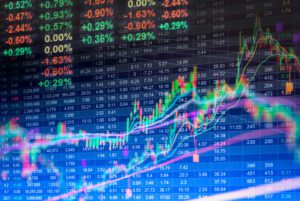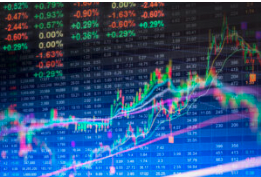GE just left the Dow. So what?

The market was down yesterday, almost 300 points!
Headlines and water cooler conversations are replete with references to what ‘the market’ did or where ‘the market’ is. The White House touts the substantial implications of (and takes credit for) ‘the market’ passing 25,000. The (non-financial) media reports on market movements but only when they’re substantial – like, more than 300 points. But what exactly is ‘THE MARKET’ to which we refer?
As just about everyone knows, those references point to the Dow Jones Industrial Average. Given the fact that the Dow and The Market are so frequently referred to somewhat interchangeably, the Dow must really be the best indicator of how things are going, right?
Actually, there are a few things that might suppress enthusiasm for using the Dow as a proxy for how things are going economically.
First of all, the Dow Jones Industrial Average measures only one kind of investment: Stocks. For the typical investor, stocks make up a portion of their portfolio, not the whole thing. Hearing that ‘the market’ plunged or surged over the course of a day will likely leave most people with an exaggerated sense of how much their 401k moved that day. Not only is the Dow made up only of stocks; they’re all US stocks. Even if someone invests only in stocks, there’s a good chance that the economics of a wide array of markets are moving their accounts – not just US markets.
Even as a benchmark for US stocks, the Dow leaves some things to be desired. First off, it’s made up of a whopping 30 stocks, selected by the editors of the Wall Street Journal. For the purpose of calculating the Dow Jones Industrial Average, these companies are weighted – but not by their size. They are weighted by their share price. What this means is that a much larger company (thus, a company with a larger economic impact) whose shares are priced at $40 has half the weighting in the average as a smaller company whose shares are priced at $80. Should a company ‘split’ its stock 2-for-1, it results in the company overnight making up half its previous weighting in the index, when this is solely a bookkeeping move and doesn’t change the company’s size at all!
In 1896, when Charles Dow and Edward Jones first calculated this average, 30 companies really did make up a big part of the US economy. It’s safe to say that this is no longer the case. None of the original 30 companies that made up Dow and Jones’ average are still included. The longest standing company, General Electric (GE), a Dow component since 1907, is now up for removal from the average, to be replaced by Walgreens Boots Alliance. This isn’t remarkable for the Dow, although it does say a lot about how far GE has fallen from its peak as a major industrial company.
Very few industry professionals use the DJIA as the benchmark against which they measure their stock market performance, mostly for the reasons discussed above. More often than not, market-value-weighted indices like the S&P 500 (measuring 500 of the largest companies in the US) or the Russell 2000 (currently tracking 1,962 of the smaller companies – some have fallen off because of mergers and de-listings, but they’ll true it back up to 2,000 soon enough). When measuring the performance of client portfolios, we prefer to structure the benchmark from the types of indices that represent the holdings in the portfolio.
Still, the sad truth is that, regardless of the index, the average investor falls well short of replicating index yields. Stock investors fall short of stock index returns, bond investors fall short of bond index returns, and diversified investors fall short of diversified index returns. There are numerous reasons for this. One is that you actually can’t invest in an index. There are index funds that are made to replicate the components of an index, but whenever you purchase stocks or bonds, you’re always encountering costs that the index does not have to bear.
But at the end of the day, the major culprit causing individual investors to fall short is human nature. We humans get unnecessarily optimistic when markets are going well, and we get panicky when markets drop. The resulting ‘buy high, sell low’ behavior is what holds the average investor back. We need to fret less about ‘The Market’, regardless of how we define it. More attention to risk tolerance, proper diversification, and staying the course, will narrow the gap between investor returns and those of the market.



